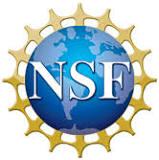Emergencies such as natural disasters and terrorist attacks occur frequently around the globe and regularly cause massive destruction. The goal of this project is to improve the ability to use publicly-available large-scale human-generated geospatial data sources for identification of emergency events. Currently, the largest impediment to using such data to identify emergency events is that very little is known about spatiotemporal patterns of human behavioral responses to these events. This project seeks to create novel machine learning tools to identify spatiotemporal patterns of reactions in human behavioral responses to emergency events using human-generated geospatial data sources. The key research goals are: (1) build a corpus of geolocated emergency and non-emergency events; (2) develop state of the art machine learning models that detect geospatial clusters of locations with anomalous human behavior based on aggregated geolocated human activity data, together with advanced geographic information system visualizations; and (3) create a catalogue of behavioral signatures characterizing emergency and non-emergency events. The project will improve knowledge about human responses to emergency events by studying their behavioral signatures through key social science theories on fear or violence and crime, the social psychology of fear, threat, and risk, and the sociology of disasters.
Geospatial graphical models will be at the core of the machine learning tools for emergency-event identification. These novel models generalize Gaussian graphical models to non-Gaussian multiway tensor data with spatial and temporal dependencies across multiple dimensions, and represent contributions to statistical and machine learning theory. Multiway tensor geospatial graphical models have the ability to capture the uncertainty in unknown multivariate interactions together with known dependencies (e.g., spatial) in a coherent manner. Non-separable spatiotemporal versions of these models will be developed as extensions of Bayesian dynamic linear models, and of multivariate factor models with correlated residuals. By exploiting the theory on Markov marked point processes and multivariate birth-death processes, this project will develop efficient, robust methods of inference and model determination. The methodological research on geospatial graphical models has a vast domain of applicability that encompasses all the scientific fields in which the analysis of multivariate spatiotemporal datasets is key: public health policy, social and political sciences, finance, electrical engineering, and computer science. These models are directly applicable in the analysis of high-resolution smartphone-based GPS locations datasets, which are now actively being collected in studies that seek to characterize the relationship between geographic and contextual attributes of the environment and human energy balance, to study segregation, environmental exposure, and accessibility in social science research, or to understand the relationship between health-risk behavior in adolescents and community disorder. The patterns and cross-national variance in response to emergency events will also inform the social sciences.
